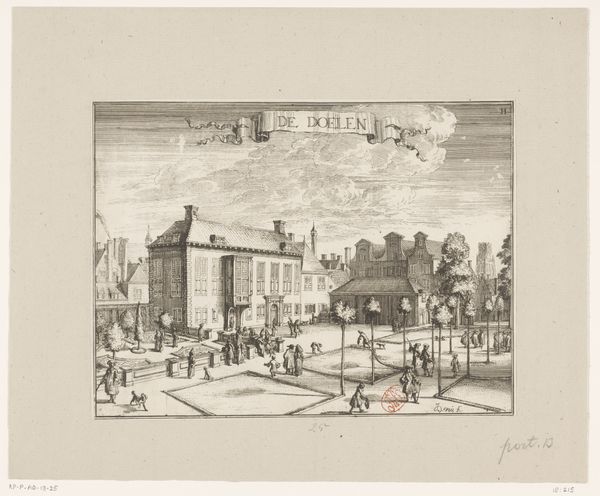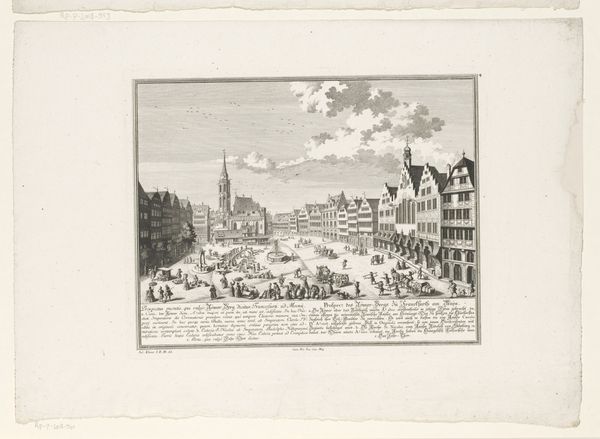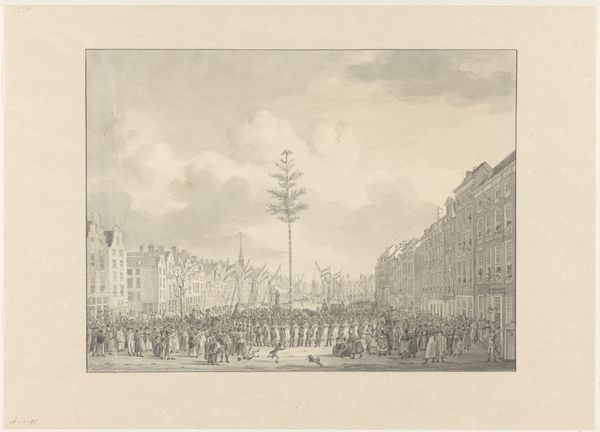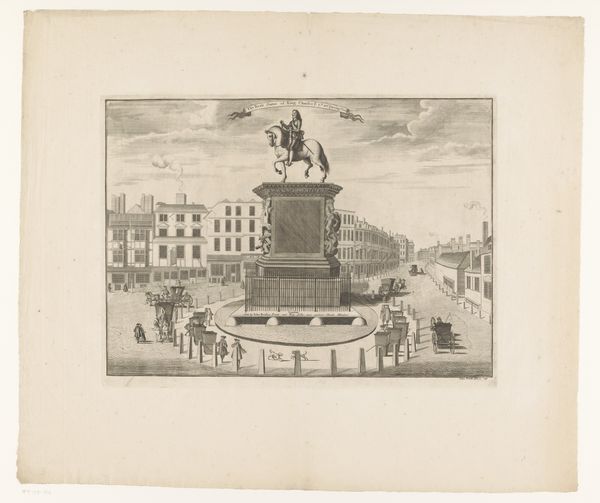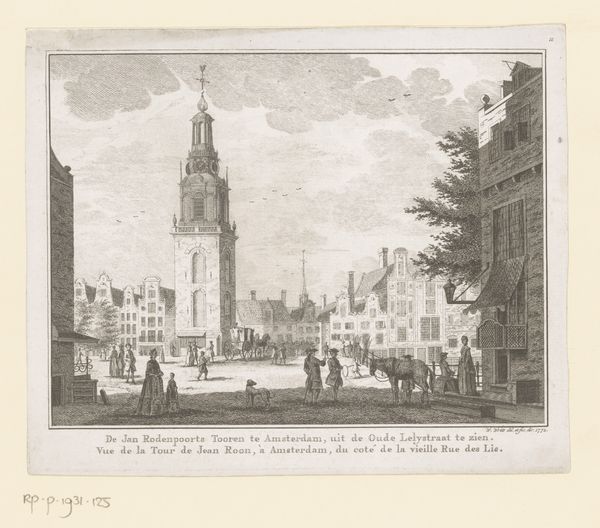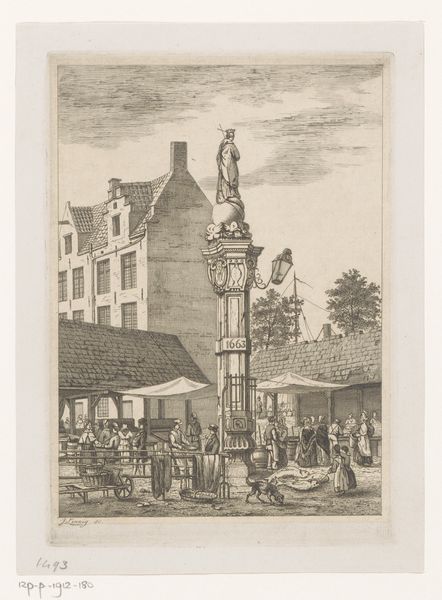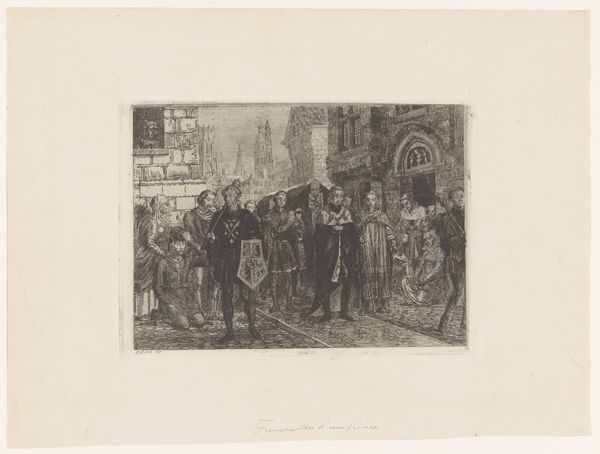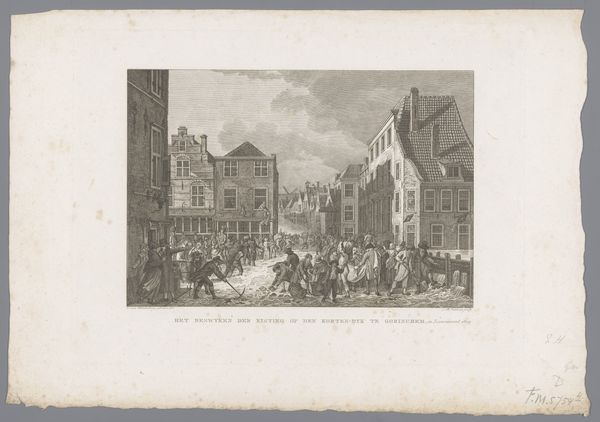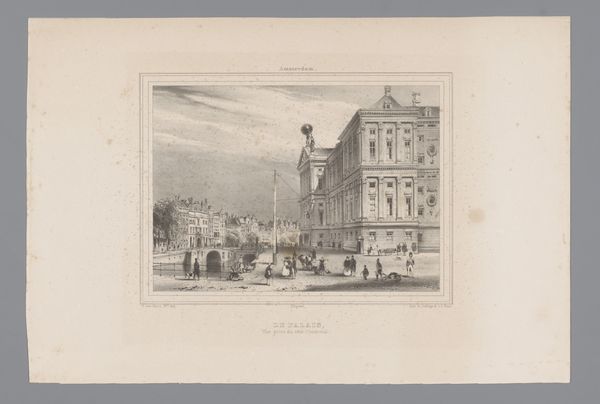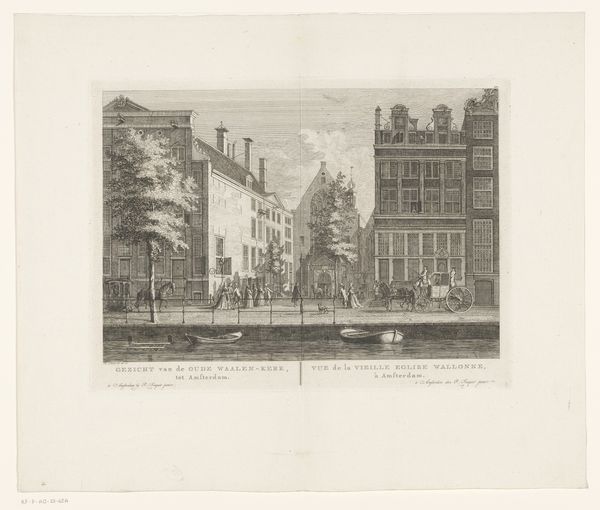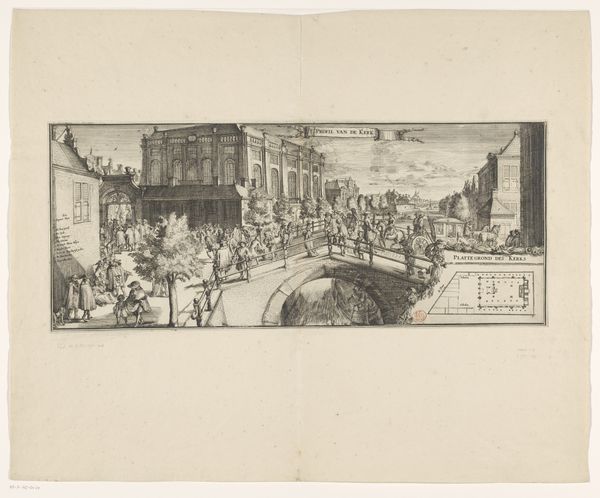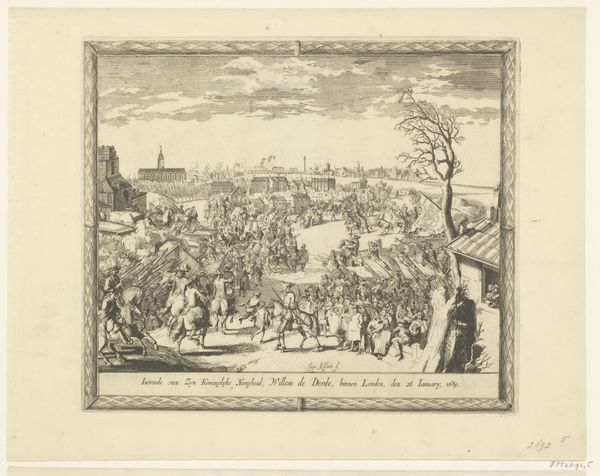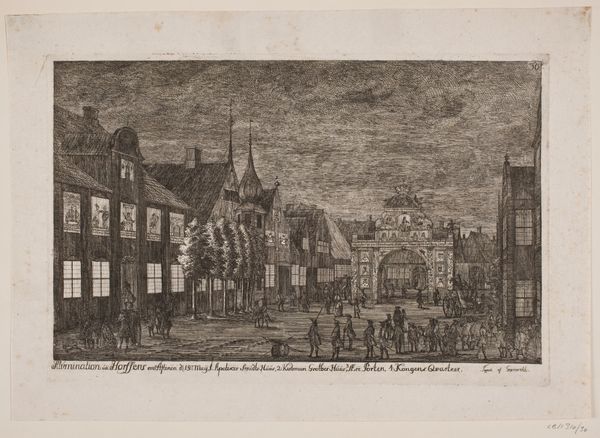
print, intaglio, engraving
#
portrait
#
statue
#
baroque
#
dutch-golden-age
# print
#
intaglio
#
old engraving style
#
figuration
#
pen-ink sketch
#
line
#
cityscape
#
history-painting
#
engraving
Dimensions: height 181 mm, width 240 mm
Copyright: Rijks Museum: Open Domain
This print, "Gezicht op het standbeeld van Erasmus te Rotterdam," was made by Johannes de Vouw sometime between 1660 and 1707. Its fine lines were achieved through etching, a printmaking process that relies on the corrosive properties of acid. The process begins by coating a metal plate with a waxy, acid-resistant substance known as a ‘ground’. The artist then draws through this ground with a needle, exposing the metal underneath. When the plate is submerged in acid, the exposed lines are eaten away, creating grooves. Ink is then applied to the plate, filling these grooves. Finally, the surface is wiped clean, and paper is pressed against the plate, transferring the ink and creating the print. The dense network of lines gives the print its characteristic appearance, a testimony to the printmaker's skill. The medium was well-suited to documenting cityscapes and portraits of the rising merchant class – an art of the public square rather than the aristocratic court. By understanding this etching, we can gain insight into the lives, labor, and cultural values of the 17th century.
Comments
No comments
Be the first to comment and join the conversation on the ultimate creative platform.
